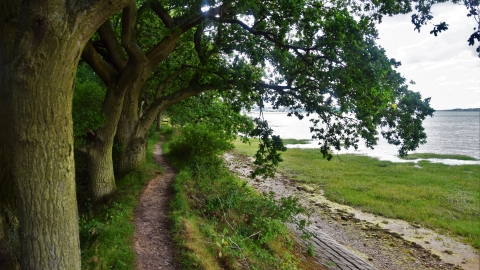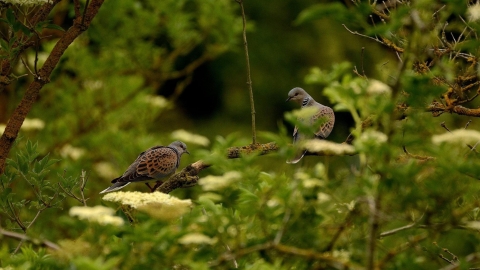

Turtle Dove - Ant Niles
Wrabness nature reserve
Know before you go
Dogs
On leads
When to visit
Opening times
Accessible at all timesBest time to visit
All year roundAbout the reserve
Towards the end of April, the first rare Turtle Doves can be heard ‘turring’ in the dense shrubbery while into May the Nightingale’s beautiful serenading song can be heard loud and clear. Barn Owls and the occasional Short-eared Owl are often spotted soaring overhead, searching for prey amongst the short grass.
Jacques Bay is filled with overwintering wildfowl and waders during the colder winter months, with Black-tailed Godwit, Turnstones and Knot foraging in the invertebrate thick mud. On the grassland Wigeons can be heard whistling, and Brent Geese calling. Livestock occasionally graze the grassland areas, promoting the growth of wild flowers and pollen loving insects.
Wrabness nature reserve is one of Essex Wildlife Trust’s most treasured sites. This winter, we’re raising £30,000 so we can extend this site - a protected safe haven for the species that live there.
Did you know?
The area previously served as a mine depot established by the Ministry of Defence until it closed in 1963. It was saved from development in 1992 by the Wrabness Nature Reserve Charitable Trust and has been managed by Essex Wildlife Trust since 2006.
In the 60s and 80s it was also subject to a prison planning application!

